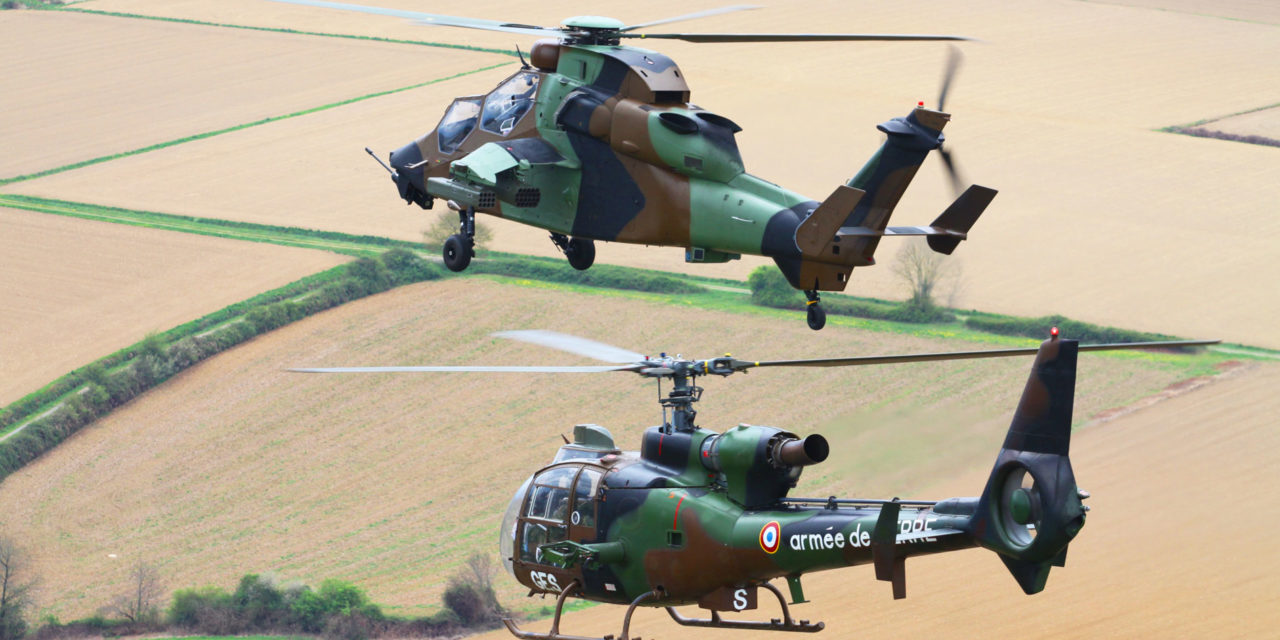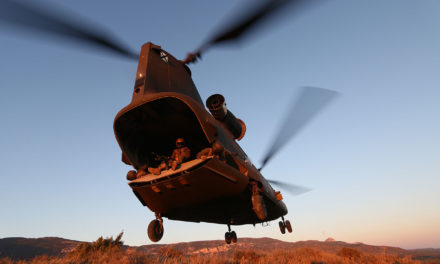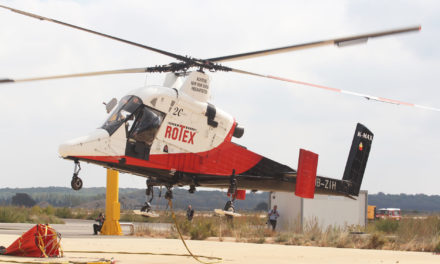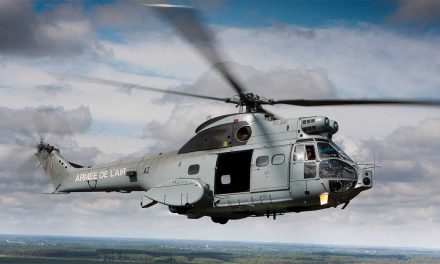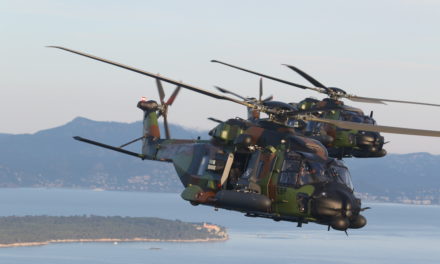It is now a well established tradition: every year, the French army light aviation (ALAT), the biggest user by the number of helicopters in France, presents their know-how, their projects… and their desires during the Days of Air Combat.
Within the installations of the 5th Regiment of Armed helicopters, dozens of stands gather servicemen and manufacturers with, as a bonus, a remarkable diversity of equipment. Outside, in the parking lot, all the devices operated by the ALAT were present. The ALAT, which managed until now to protect its model (see the interview with general Grintchenko, commander of the ALAT), is passing through a crucial time: in 2017, they received 18 of 22 new helicopters delivered to the ministry of the armies and the year which begins will be for training and fine-tuning. General Grintchenko likes to remind us: in 2017, a third of the fleet consisted of new generation devices (Tiger, NH90 Caiman, renovated Cougar). The proportion will be 50 % in 2019 and two thirds in 2022.
It is certainly a real transformation, however it will not be complete: on the horizon in 2030, the ALAT will have a fleet of 147 helicopters for reconnaissance and attack (HRA) still mainly made up of fifty-year-old Gazelles. We will then have 80 Gazelles and 67 Tiger HAD, unless the arrival of the first HIL (see below) begins to reduce slightly the average age. With regards to the helicopters of maneuver and attack (HMA) the ALAT will have 36 NH90 Caiman in 2019 and 70 in 2025. On the horizon in 2030, the law of military programming (LPM) still plans for the presence of the remaining 11 Pumas which will be part of the group of 70 Caimans, 26 renovated Cougars and 8 Caracals.
The ALAT will still not possess any heavy helicopters. As indicated moreover by the words of the leader who “prefers to receive, with the same budget, two NH90 rather than a single heavy helicopter…” General Grintchenko evokes as well two paths to operate without heavy devices: a more frequent use of the fixed-wing aircraft, a greater number of logistic missions being made between sites with landing surfaces, and increased cooperation. “Our allies have such helicopters and it’s for the best: without any doubt France will rely on the capabilities of their partners when circumstances require it” he explains. A practical illustration of this plan could be made in the middle of year by sending three British Chinook in Sahel, alongside the French forces. Germany also has strong goals concerning heavy helicopters. “Rather than being jealous of them, it’s better to try to get on board with their machines” explains the commander of the ALAT. If there is no more suspense about the heavy helicopter, there remains however a certain amount around the light Helicopter for joint forces (HIL) intended to renew six fleets of light helicopters for three armies. For the ALAT, which needs about 80 devices, the choice is clear: it will be the H160M. The project of LPM specifies that the first acquisitions will be made in 2022, with the first deliveries in 2028. Airbus Helicopters had come to the JAC with a prototype of the H160 and two models presenting the new device in the colors of the ALAT.
Besides the replacement of its oldest devices, the ALAT has to manage at once several important areas of improvement, foremost of which are navigability and digitization. After several years of effort and investment, the end is near as far as the effort for better navigability. “The hill is behind us” noted general Grintchenko. “The unproductive investment is over and the tools which we set up allows greater security in flight.” Certainly, the follow-up of navigability comes with rigorous procedures, often times somewhat restrictive. But ALAT aims to be realistic and especially not restrained by counterproductive rules: “I can loosen the rules when necessary” underlined our interlocutor.
As for another long and complex project, digitization offers not only a tactical advantage and helps with maintenance issues, but also a traceability of actions: roads taken, ammunition delivered… so many elements which can be essential in the system of “proof of action” which goes hand in hand with the judicialization of society. The difficulty is to make the abilities of modern systems work with the older fleets. The ALAT is not obliged to work at this level, but their desire to do so is obvious.
Three questions for general Grintchenko, commander of ALAT
The days of air combat coincided with the presentation of the law of military programming (LPM) to members of parliament. What do you think of this project?
The project of LPM covers only the next seven years, which is rather a short amount of time for us, because we plan rather for 2030. This longer term, equivalent to double the LPM, is a requirement to preserve a well-balanced, functional ALAT and especially renewed: the metamorphosis which we have presently is exceptional and it is going to continue in the coming years: in 2022, two thirds of our devices will be new generation. Certain programs will however be delayed with the first LPM, but eventually the final goal will have to be respected, with 300 aircraft, 3 regiments of armed helicopters, a regiment of helicopters for special forces, a regiment of air-mobile support, a training center …
Are you satisfied with the availability of your devices?
We have 300 aircraft of which part is on industrial sites and of which we have no access. For the rest, we run globally at about 60 %, which is satisfactory. Still this figure hides big disparities: we have low points where we can allow it, to keep the availability when it is absolutely necessary, such as for example in OPEX. Around thirty of our devices are permanently in operation! In this case, we need at least 80 % availability, but here, as well, it can vary: from 75 % when we prepare an operation to 90 % during the operation itself … I add, and it is very important, that all requested missions were completed. Every hour of flight paid by the budget was produced by maintenance and used.
In spite of the presence of a Spanish device during the JAC, we have the feeling that the ALAT seems limited in its cooperation with comparable forces? Is it a false appearance?
To cooperate it is necessary to want it first and then be able to do it. We want it, it is certain. But we are a small group, hardly 5000 men and women, among whom there are 2500 mechanics. Our margin for “human” movement is thus quite reduced, whether it is to organize a show such as the JAC or organize joint-efforts with our neighbors … We maintain permanently, however, an officer at Fort Rucker (United States) and another one at Middle Wallop (Great Britain). Our cooperation with the Germans is also quite vast with the EFA at Le Luc and the school at Fassberg for mechanics. Operational needs also make it so that we have gotten closer to each other in terms of force preparation and information exchange.
By Frederic Lert – @photos by F.Lert

